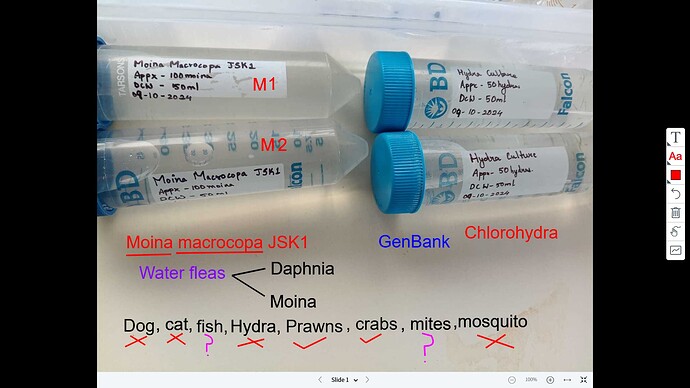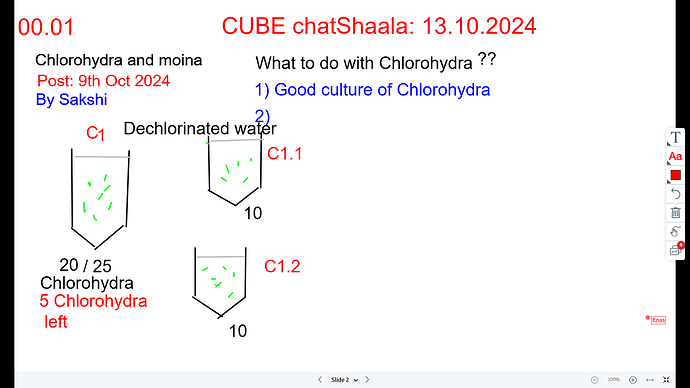We started the discussion with Moina and Chlorohydra, which were sent by Sakshi from Mumbai to Kiran in Uttarakhand. Sakshi sent two Falcon tubes, each containing approximately 100 Moina, and two more Falcon tubes, each with approximately 50 Moina.
Moina and Daphnia is a water flea present in freshwater and move quickly.
We also discussed how to do the nomenclature of organisms, focusing on Moina macrocopa JSK1. In this case, Moina represents the genus, macrocopa the species, and JSK1 represents the strain.
The distinction between different strains of a species, like macrocopa, is based on genetic sequence differences. But which specific sequence is looked for specificity of strain??
We also touched upon how CUBists collected a sample from a pond in Mumbai, initially mistaking it for Daphnia. Upon further investigation, they identified it as Moina (from Acharya Narendra Dev College, Delhi). Additionally, the CUBists developed a cost-effective method for isolating DNA from Moina, sequenced it, and identified the strain as Moina macrocopa JSK1.
• How does Chlorohydra looks like when present in the bottle?
• How do Chlorohydra reproduce?
• What should one do after he/she gets Chlorohydra and Moina (and Chlorohydra found to be in budding stage?
First split or divide the Moina into two other bottles and make sure to have some Chlorohydra in the original culture.

